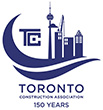Learn About Moisture Control For Buildings
Moisture is the number one cause of mold growth, structure, and property damage in your
home, but its effects can be controlled and mitigated by the savvy homeowner. With a little
knowledge of how, when, where, and why, you can give yourself a leg up on the fight against
moisture and protect your biggest investment.
The first thing to be aware of is moisture flow, or the paths that water takes - and collects -
around your home. Water might collect because of grading or clogged eaves troughs and
downspouts, and a saturated earth around your home can easily cause a damp basement or
rotting wood. While water is the most obvious in its solid and liquid forms, it’s important to
remember that it is the third form - vapor - along with liquid, that cause the most invasive
damages to your home.
Sources of Moisture
Moisture can enter into your home from both external and internal factors. An unsealed
basement may cause moisture to enter your home, but so does running the dishwasher or
having a shower. The more people who live in a home, the greater the moisture inside of it.
Cooking, cleaning, and other daily activities will all add moisture that needs to be flushed out of
the house to prevent it from lingering and leading to mold or rot.
Some of the common sources of interior vaporized moisture include:
- People: An average family of four can add about 5 litres of moisture per day
- Chores: Cooking, cleaning, and washing can add another 5 litres
- Plants and pets
- Unsealed dryer exhaust ducts or air drying clothing
- Humidifiers
Exterior sources of moisture in the home can come from:
- Snow melt
- Rain
- Humidity and fog
- Weather events with excessive rain, snow, or rapid melting
Moisture Control
Controlling the amounts of moisture in your home can be successfully done by:
- Producing less moisture
- Utilizing construction and building techniques to keep water away from your structure
- Dehumidifying
- Exhausting excess indoor moisture.
It’s usually the last point that is the easiest for the average homeowner to achieve without big
lifestyle changes. That may result in new exhaust fans for moisture prone areas like the bathroom, or added ventilation in the attic or basement. Controlling moisture flow helps your building structure last longer by preventing unnecessary wear and tear, and it adds to your indoor comfort by allowing you greater control of your indoor humidity.
Ignoring moisture in the home can lead to a number of unpleasant and costly problems:
- Flooded basements
- Problematic attics
- Swelling or rotting material
- Condensation on windows
- Mold growth
Signs of Excessive Moisture
The signs of excessive moisture in your home may vary from room to room. In your living room, you may experience condensation on the windows, mold or mildew growth on walls or furniture, or doors and windows that won’t open because of swollen or rotting wood.
In the basement, you’ll likely be able to smell the moisture as a damp, musty odor. Metals may corrode, the floors or wall may be clammy and damp to the touch, and there could be condensation dripping from the pipes. In your attic, moisture is present when you have exterior paint that is peeling, water staining on rafters, and moist or compressed insulation.
Insulate Right
Improperly installed insulation can often add to a moisture problem, because it adds to the temperature difference between the indoors and out. Insulated walls will make exterior walls colder, and the meeting of cold and warm surfaces will cause moisture to condense. When this happens between insulation and your exterior wall, mold growth is usually the result. The temperature that water condenses is called the dew point, and as insulation takes on water, it becomes more and more inefficient and makes the problem worse.
Keeping Moisture Out
Moisture will come into your home when your building envelope isn’t entirely sealed against air leaks, but weather, temperature, wind, and air pressure can also affect it at different times of the year. The best way to ensure you have good indoor moisture control is to seal up those air leaks and monitor exterior and interior moisture sources. If you have a concern about the moisture control in your new build or renovation, get in touch - an EcoStar Insulation technician would be happy to help you mitigate moisture problems and improve your indoor environment.



